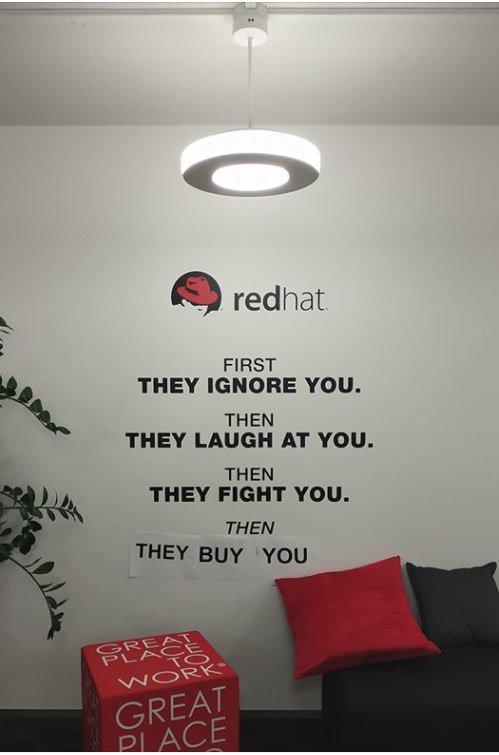Regardless the kind of startup, the secret of all tech startups today is software. Marc Andreessen wrote a seminal post about it a long time ago; why software is eating the world. One of the major advantage is that software allows for endless tweaking. It’s almost impossible to tweak hardware when it’s out of the door though you can influence hardware by software. Tesla proves that regularly by improving or changing the performance of their cars by an over-the-air software update. It makes BMW’s dealer performed software upgrades which takes 24 hours to “program” the onboard car computers look like a dinosaur.
This endless tweaking allows to keep up with changing expectations and user behavior. A great example is Google Search. On the surface, Google Search hasn’t changed much since it was launched, but Google has been steadily improving search results and making subtle changing the UI/UX. I think most users would be hard pressed to point out all the changes Google made in the last decade to their product, but if you see Google Search of 2008 and today, you can clearly see a myriad of changes and improvements.
It also allows to start small and keep growing from there. Initially, Facebook was nothing more than a digital version of the school’s yearbook with a few limited options to communicate. From there, it grew into what it is today. Facebook constantly tweaks and tunes the timeline. It added stories to fend off Snapchat. That’s the power of software at work right there.
I personally find that the most fascinating aspect of the new breed of companies. In the past, we had companies with big product launches every so many years. Every product introduction also made existing products obsolete or at least feel behind the times.
I got inspired to write this post because I own a Bluesound Node – a product which launched 4 years ago. I still get regular monthly updates of the software. Bluesound’s products are now two generations since the introduction of my Node, but they keep my Node up-to-date. I like that, it makes me confident that the company stands behind their products and I’m not afraid they’ll become obsolete with every release of a new generation. Their products are expensive, but they’re build and maintained to last.
In contrast, Google Android is a mess. Most Android phones do not get security updates – let alone a new major version of Android. In essence, your Android phone is obsolete the moment it is released. Google is now pushing for vendors to provide security updates for at least 2 years. This is a major improvement, but still it’s nowhere near Apple’s commitment to keep their old devices current and up to date. IOS 12 still runs on a iPhone 5S. The 5S was introduced in 2013. The cut-off is even reasonable to explain because it’s the oldest model supporting 64-bit software.
Even Microsoft changed Windows to a rolling release model. They earned their scars with the never dying XP and the never released Longhorn debacle. At the time, it took Microsoft 5.5 years to bring a major update to Windows to the market. I think it’s the best example on how to not to use the advantages of software and try to mold it into old-school big product releases on multi-year schedule.
You can argue that Apple is doing the same with their yearly rhythm to release big updates. But that’s not entirely true. Apple brings minor updates throughout the year. Most features are presented and released during the yearly update, but bug fixes, security updates and delayed feature updates come throughout the year. My son’s iPhone 5s is still humming along fine albeit more slowly than my iPhone X.
On the other hand, big changes or paradigm changes are very risky and I’d argue unnecessary. Snapchat’s changes to the core product to become more of a social media company than a messaging app is a good example. It didn’t go down well with their user base. It was unnecessary. It’s fine to set the goal – in this case more social media because it allows us to sell more ads – but the way to get there is to migrate from where you are today to your desired end-state.
Google Plus had the same problem. Google has the properties to become a more social company and even launch a social media or network property. They aimed too high and it set expectations too high. They could only fail. With Search, Gmail, Youtube, Photos and their other properties, they certainly have the reach to launch a social media / network property. If they had chosen a more gradual switch by introducing social features into their core products and linking them together, they could’ve pulled it off. It was too much at once, users never had the chance to start the new journey and get on the bandwagon.
Software enables us to choose a small starting point and keep growing from there. It’s a very powerful paradigm, but it doesn’t get enough attention. “Release early and often” is a adagio preached by developers and they’re right. It should apply to companies as a whole. Software makes this possible.
At any startup, I hear myself repeating “I know where we’re heading and where we want to end up, but I’m not sure how the road looks like to get there. Let’s take one step at a time and each step should bring us a step closer to the end goal”.
